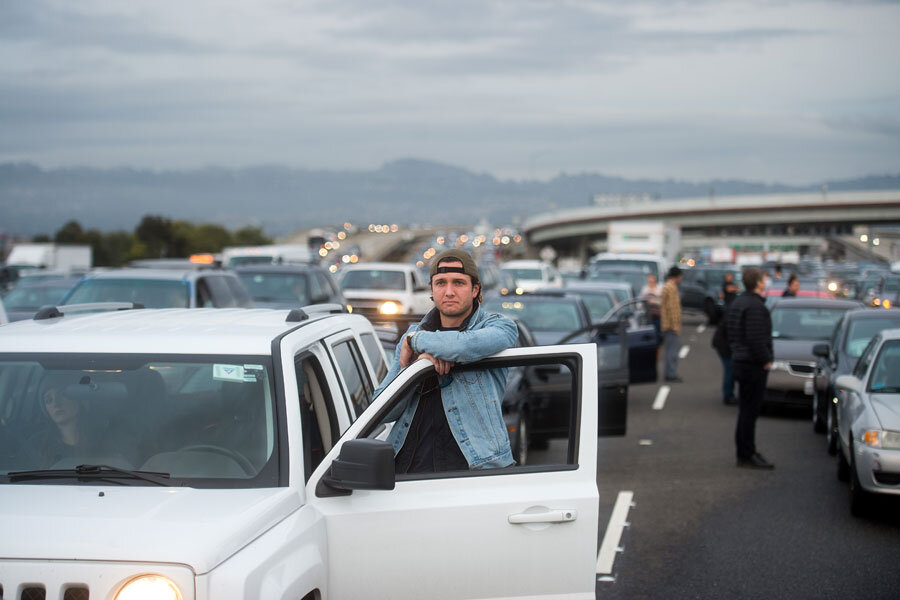Why did Black Lives Matter protesters shut down the Bay Bridge?
Loading...
Black Lives Matter protesters chained themselves together across the San Francisco-Oakland Bay Bridge Monday, blocking westbound rush-hour traffic.
Protesters blocked the five lanes headed into San Francisco just before 4 p.m., causing all traffic to be stopped for at least 30 minutes. California Highway Patrol gradually reopened all five lanes within an hour and a half, but heavy traffic persisted for hours afterward.
“In a courageous display of solidarity and the spirit of MLK, Black.Seed, a Black, queer liberation collective, has shut down the Bay Bridge as a show of resistance to a system that continue to oppress Black, Queer, Brown, Indigenous and other marginalized people throughout the Bay Area,” the Anti Police-Terror Project posted on their website Monday.
The protesters had several demands. They called for the repurposing of city policing funds toward affordable housing; the resignation of Oakland Mayor Libby Schaaf; and the immediate termination of San Francisco Police Chief Greg Suhr, Oakland Police Chief Sean Whent and the Bay Area officers involved in eight controversial police shootings within the past two years.
One of the victims, Mario Woods, was shot by police in early December after officers reported Woods refused to drop a kitchen knife he was carrying. Cell-phone video footage of the shooting angered many protesters who say Woods was not acting aggressively.
Yuvette Henderson, another one of the eight victims, was killed by police officers in Oakland who suspected her of shoplifting. Ms. Henderson was armed with a pistol, but a civil-rights complaint alleges that she never raised the weapon to police.
“The inconvenience you may have experienced today on the bridge – imagine what it’s like to have your life and your well-being continuously inconvenienced as a black person,” Mia Birdson, a Black.Seed member, told NBC New York.
If the protesters hoped to encourage public support for their cause, Monday’s traffic-tactic may have been unsuccessful.
“I feel like whatever they’re protesting, I want to be against it right now,” Chris Day told SF Gate. Mr. Day was driving to his home in Redwood City when he got stuck in the protest traffic. “People have the right to protest, but they don’t have the right to block traffic. What if someone has a job interview or an important appointment?”
Another driver, Robert Holtz of Ripon, told SF Gate that the traffic was preventing him from attending a memorial service.
“They could put their energies into a lot more useful venues than sitting on a bridge and making everyone suffer,” he said.
All 25 protesters were arrested and booked into San Francisco County Jail on misdemeanor charges of public nuisance, unlawful assembly, obstructing free passage, and false imprisonment.
The protest may have been unpopular, but the bridge had historical significance on Martin Luther King Jr. Day.
“Blocking city streets has been an urban protest tactic since there were urban protests,” Sarah Goodyear writes for The Atlantic City Lab.
One of the most notable US road protests was King’s five-day march from Selma to Montgomery, Alabama in 1965. Federal District Court Judge Frank Johnson Jr. later upheld the march as legal, a highly controversial ruling at the time.
“The law is clear that the right to petition one’s government for the redress of grievances may be exercised in large groups …,” wrote Judge Johnson, “and these rights may be exercised by marching, even along public highways.”








